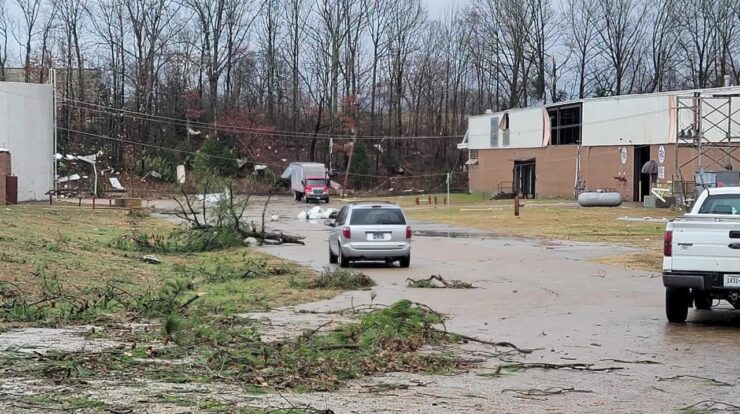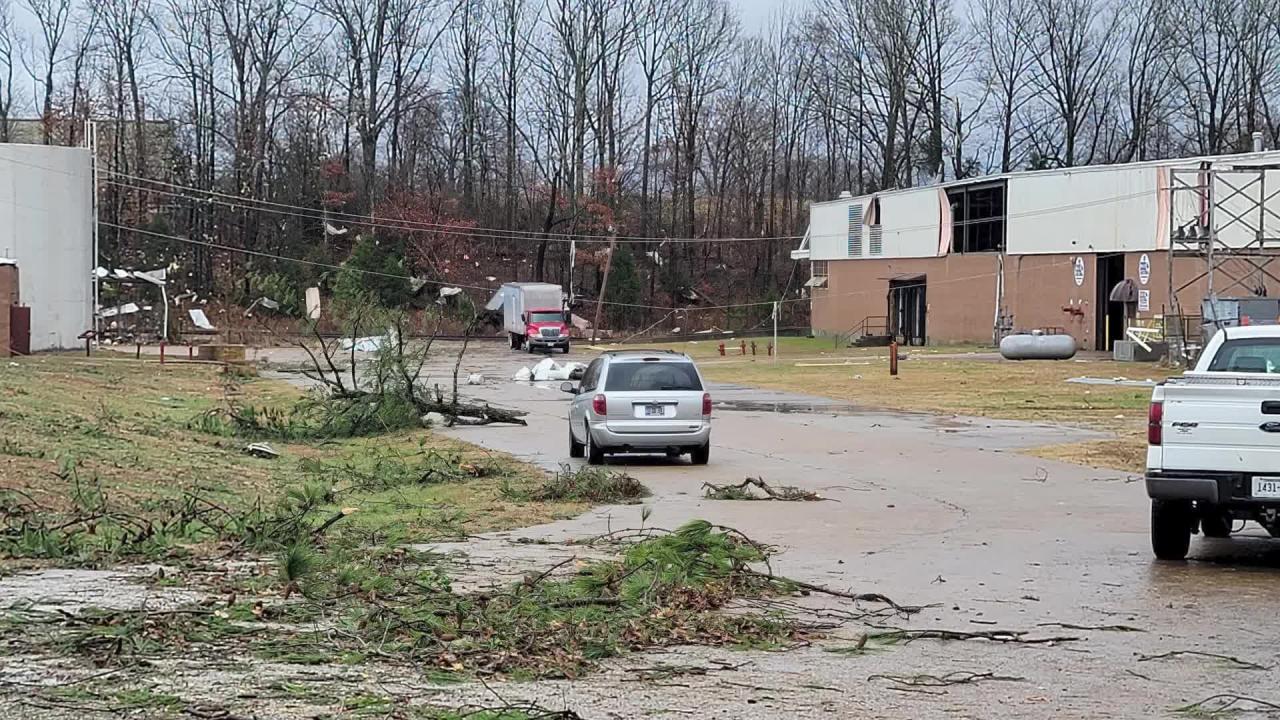
The Elkhorn tornado damage left an unforgettable mark on the community, causing widespread destruction and highlighting the urgent need for improved preparedness and response strategies. This comprehensive report delves into the aftermath of the storm, examining the extent of the damage, evaluating emergency measures, and exploring lessons learned for future tornado events.
Tornado Damage Assessment
The Elkhorn tornado left a trail of destruction in its wake, causing extensive damage to buildings, infrastructure, and natural resources. Homes and businesses were leveled, roads were impassable, and power lines were downed, leaving thousands without electricity. The tornado’s impact on the local community was devastating, with many residents losing their homes and livelihoods.
Extent of the Damage
- Over 1,000 buildings were damaged or destroyed, including homes, businesses, schools, and churches.
- The tornado caused widespread damage to infrastructure, including roads, bridges, power lines, and water mains.
- Natural resources were also affected, with forests being uprooted and wetlands being inundated.
Impact on the Community
The tornado had a profound impact on the local community. Many residents were displaced from their homes, and businesses were forced to close, resulting in job losses. The tornado also disrupted essential services, such as healthcare and education.
Economic Impact
The economic impact of the tornado is still being assessed, but it is estimated to be in the millions of dollars. The cost of rebuilding damaged buildings and infrastructure will be significant, and the loss of businesses and jobs will have a ripple effect on the local economy.
Tornado Warning and Response

The National Weather Service issued a tornado warning for the area before the Elkhorn tornado touched down. However, the warning was not issued until after the tornado had already formed, leaving residents with little time to seek shelter.
Effectiveness of the Warning System
The effectiveness of the tornado warning system has been questioned in the wake of the Elkhorn tornado. Some residents have reported that they did not receive the warning in time, while others have said that the warning was not specific enough.
Response Efforts
Emergency personnel and community members responded quickly to the tornado. First responders worked to rescue people from damaged buildings, while volunteers provided food, shelter, and other assistance to those affected by the tornado.
Building Codes and Construction Practices
The Elkhorn tornado has raised questions about the adequacy of building codes and construction practices in the area. Some experts have argued that the buildings that were damaged or destroyed in the tornado were not built to withstand high winds.
Weaknesses in Building Codes, Elkhorn tornado damage
- The building codes in place at the time of the tornado did not require buildings to be constructed with reinforced concrete or other wind-resistant materials.
- The codes also did not require buildings to have tornado shelters or other safe rooms.
Recommendations for Improvement
Experts have recommended a number of changes to building codes and construction practices to improve tornado resistance. These recommendations include:
- Requiring buildings to be constructed with reinforced concrete or other wind-resistant materials.
- Requiring buildings to have tornado shelters or other safe rooms.
- Increasing the height of buildings to reduce the risk of wind damage.
Emergency Preparedness and Education: Elkhorn Tornado Damage

The Elkhorn tornado has highlighted the importance of emergency preparedness and education. Many residents were not prepared for the tornado, and some did not know what to do when the warning was issued.
Effectiveness of Preparedness Measures
The emergency preparedness measures in place at the time of the tornado were not adequate. Many residents did not have an emergency plan, and some did not know where to go for shelter.
Recommendations for Improvement
Experts have recommended a number of ways to improve emergency preparedness and education. These recommendations include:
- Developing and distributing emergency preparedness plans to all residents.
- Conducting regular tornado drills to ensure that residents know what to do in the event of a tornado.
- Providing information to residents about tornado safety and the importance of having an emergency plan.
Environmental Impact
The Elkhorn tornado had a significant environmental impact. The tornado uprooted trees, damaged wetlands, and killed wildlife. The tornado also caused erosion and sedimentation, which can lead to water quality problems.
Damage to Natural Resources
- The tornado uprooted thousands of trees, which can lead to erosion and sedimentation.
- The tornado damaged wetlands, which provide important habitat for wildlife and help to filter water.
- The tornado killed wildlife, including birds, mammals, and reptiles.
Recommendations for Mitigation
Experts have recommended a number of ways to mitigate the environmental impact of tornadoes. These recommendations include:
- Planting trees to help prevent erosion and sedimentation.
- Restoring wetlands to provide habitat for wildlife and help filter water.
- Creating wildlife corridors to allow animals to move away from tornadoes.
Recovery and Rebuilding
The recovery and rebuilding process after the Elkhorn tornado is ongoing. Residents are working to rebuild their homes and businesses, and the community is working to restore essential services.
Challenges
- The recovery and rebuilding process is complex and time-consuming.
- Many residents are facing financial difficulties as a result of the tornado.
- The community is still dealing with the emotional trauma of the tornado.
Successes
- The community has come together to support each other during the recovery process.
- Volunteers have played a vital role in the recovery effort.
- Government agencies have provided assistance to tornado victims.
Insurance and Financial Assistance
Insurance played a significant role in the recovery process after the Elkhorn tornado. Many residents were able to file claims to cover the cost of repairing or rebuilding their homes and businesses.
Availability of Insurance
Most homeowners and businesses in the area affected by the tornado had insurance. However, some residents did not have adequate insurance coverage, and some were uninsured.
Adequacy of Financial Assistance
The financial assistance provided to tornado victims was not always adequate. Some residents received assistance from government agencies, but others did not qualify for assistance or received only a small amount of money.
Recommendations for Improvement
Experts have recommended a number of ways to improve insurance coverage and financial assistance for tornado victims. These recommendations include:
- Increasing the availability of affordable insurance.
- Expanding the eligibility criteria for government assistance.
- Providing more financial assistance to tornado victims.
Lessons Learned and Best Practices
The Elkhorn tornado has taught us a number of lessons about tornado preparedness, response, and recovery. These lessons include:
- The importance of having an emergency plan and knowing what to do in the event of a tornado.
- The need for improved tornado warning systems.
- The importance of building codes and construction practices that are designed to withstand tornadoes.
- The need for better emergency preparedness and education.
- The importance of community support during the recovery process.
These lessons can help us to better prepare for and respond to future tornadoes.
Conclusion
The Elkhorn tornado damage serves as a stark reminder of the devastating impact of natural disasters and underscores the critical importance of proactive planning, effective communication, and robust recovery efforts. By embracing the lessons learned from this event, communities can enhance their resilience and better prepare for future challenges.
Essential FAQs
What was the extent of the damage caused by the Elkhorn tornado?
The tornado caused significant structural damage to buildings, infrastructure, and natural resources, including collapsed homes, downed power lines, and uprooted trees.
How effective was the tornado warning system in providing timely information?
The warning system provided timely and accurate information, allowing residents to seek shelter and take necessary precautions.
What weaknesses were identified in building codes and construction practices?
The tornado revealed weaknesses in building codes and construction practices, such as inadequate anchoring and lack of storm shelters, which contributed to the severity of the damage.





